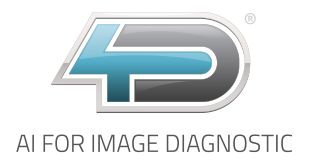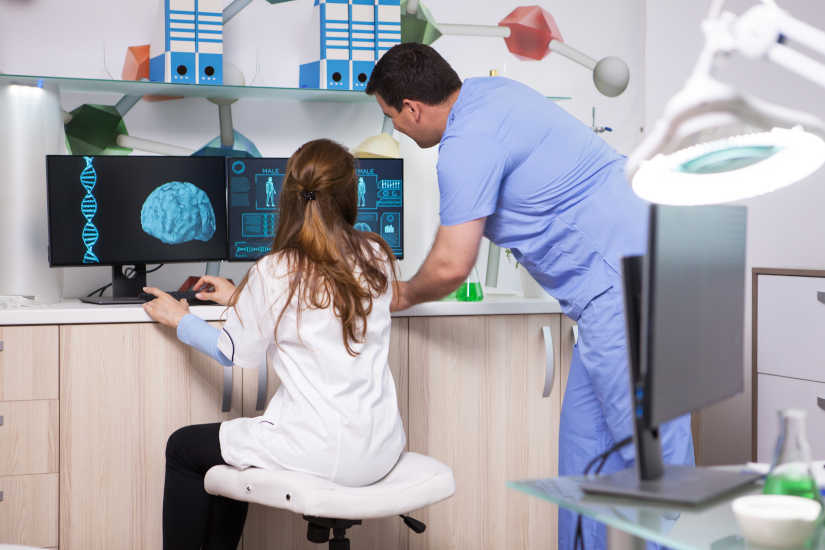The progress of new technologies has enabled a great evolution in the field of medicine. Nowadays, artificial intelligence (AI) has become a fundamental tool in different medical specialties, among which the area of image diagnosis. The integration of AI in medical diagnostics offers a multitude of benefits: increased accuracy and quality of diagnostics, early disease detection, task automation, workflow optimization, creation of personalized treatments and preventive measures.
Obtaining a rapid, accurate and effective diagnosis is a key aspect of achieving more efficient healthcare. The use of traditional methods involves the analysis of a large amount of data and the performance of tasks that involve a large amount of data. investment of time and resources. In addition to these aspects, there is also the limitation of the human subjectivityThe use of algorithms for the diagnosis and treatment of the disease, which can lead to errors in clinical practice. In this sense, the use of Artificial Intelligence in medicine has had a remarkable impact on diagnostic imaging. In the following article, we look at how AI that analyzes medical images works and its main applications.
Artificial Intelligence techniques in the analysis of medical images.
Artificial intelligence studies, designs and develops computerized computer systems based on algorithms. that can emulate some of the functions performed by humans, such as thinking and learning to solve problems. An algorithm consists of a set of computer instructions that are designed to perform a specific task. In recent years, a number of tools have emerged, such as the AI-enabled software that use artificial intelligence to automate many tasks and functions in the clinical setting.
What type of technology is used in medical imaging and how does it work? We can differentiate between different techniques:
Machine Learning (ML)
Machine Learning (ML) is a field of artificial intelligence which consists of the use of computer algorithms to analyze and classify data, to learn from it and to make future predictions. The system must comply with a training phase which is referred to as supervised. During this process, medical images are entered with their corresponding, manually implemented labels. As more data is exposed, the algorithm learns to give a specific answer by evaluating different hand-labeled tests.
Most imaging systems make use of this type of artificial intelligence and it is important that, before using it in clinical practice, the system has been tested and validated. One of its main uses is to predict diseases at an early stage. For example, analyzing the probability that a breast lump visible on mammography is a malignant tumor.
Representational Learning or Representation Learning (RL)
Representation Learning (RL) is a sub-type of Machine Learning (ML) that does not require image features to be labeled by hand. Computer algorithm learns on its own the necessary characteristics to classify the data provided. Therefore, human subjectivity is eliminated, i.e., the limitation of analyzing those characteristics that the human being considers relevant. This system is called unsupervised learning and, if sufficient data is provided, the performance that can be obtained is superior to traditional ML.
Deep Learning (DL)
Deep Learning (DL) is an advanced form of Representation Learning (RL). This type of algorithm is in charge of exploring the use of artificial neural networks.based on the structure and function of the human brain. The artificial network of neurons is composed of different layers and connections. Through each layerIn addition, a series of data is propagated that is linked to the performance of a specific task.
In the area of diagnostic imaging, each layer is responsible for analyzing a characteristic of the medical image and assigning a value to it. Subsequently, the final layers of neurons are responsible for collecting all the information and providing a result. This type of technology has great potential and interest in medical image analysis, as it allows multiple uses. From the automatic detection of a lesion in the images and suggest differential diagnoses to structure a report in a preliminary way.
6 applications of AI in medical image analysis
Artificial Intelligence has the ability to process large amounts of data and recognize complex patterns. We can highlight the following applications in the field of diagnostic imaging:
1. Attendance at the radiologist's work
Power of Attorney manage patients' medical records electronically is a very important step forward, since it facilitates the work of the various medical teams involved in the diagnostic imaging process. AI can help to highlight the most relevant data and propose a specific planning of the study to provide information to the different professionals: the clinician, the technician and the radiologist.
2. Optimization of the radiological technique
Using Deep Learning (DL) methods, the algorithms allow for reconstruct images in medical techniques such as magnetic resonance imaging and computed axial tomography, or TAC. With this, the quality of medical images can be increased, making the most of the technical and physical resources available. Another advantage offered by AI is that it makes it possible to establish the ideal amount of radiation for each patient, avoiding the addition of unnecessary radiation.
3. Segmentation and lesion detection
Through the use of AI, the systems can understand the visualized images of an examination and differentiate healthy structures from pathological areas.
4. Classification and diagnosis of pathologies
There are different machine learning algorithms that can identify specific patterns and characteristics in medical imaging for classify them into different disease categories. Currently, algorithms are being developed for the detection of tumors in mammography images and skin cancer in dermoscopy images. In this field, AI can identify cancerous tissues and classify them into specific cancer types, which can lead to faster and more accurate diagnostics.
5. Prediction of treatment response
Artificial Intelligence can also predict patient response to different treatments. Algorithms can access patient data and medical studies with the diagnosis of the patient's disease. With all this information, the patient's response to various treatment options can be predicted. This offers many advantages, as the following can be developed specific treatment plans with a personalized approachadapted to the needs of each patient.
6. Early detection of diseases
Another of the applications of AI in medicine is the early detection of diseases. Through the analysis of large amounts of data, it is possible to detect patterns that may be missed by traditional techniques. For example, one of the uses recently offered by machine learning algorithms is to be able to detect early changes in magnetic resonance images of the brain, which may be indicative of diseases such as Alzheimer's disease.
AI-assisted medical diagnostics is evolving rapidly. Ongoing research is seeking to refine existing AI models with the aim of exploring new applications to provide much more accurate, efficient and faster medical care.
Bibliography
Durán, L., & Gutiérrez, M. (2020). Imaging: Technical fundamentals and medical application. Vitalia, 8(2), 183-278. Retrieved from https://revistavitalia.org/index.php/vitalia/article/view/183/278
Radiological Society of Uruguay (2021). Radiology and technological innovation in Latin America. Journal of Diagnostic Imaging, 4(1), 53-63. Retrieved from https://www.sriuy.org.uy/ojs/index.php/Rdi/article/view/53/63
Radiological Society of Uruguay (2022). New trends in diagnostic radiology. Journal of Diagnostic Imaging, 5(2). Retrieved from https://www.sriuy.org.uy/ojs/index.php/Rdi/article/view/94
Fernández, J., & Salazar, A. (2023). Advances in medical imaging techniques. Latin Science, 7(3), Article 13751. Retrieved from https://www.ciencialatina.org/index.php/cienciala/article/view/13751



